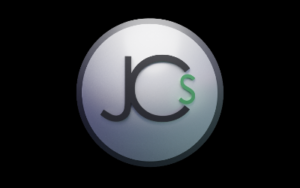Menu Terms & Conditions Privacy Policy Cookie Policy J. CAMARENA...
Read MoreJ. CAMARENA STUDIO - BILINGUAL DIGITAL MARKETING SERVICES
Starting from Scratch: Should New Businesses Begin with Organic or Paid Traffic for Lead Generation?
For new businesses, generating leads and driving traffic to a website can be daunting. Deciding whether to invest in organic or paid traffic strategies is a critical choice that can significantly impact both short-term performance and long-term growth. This article explores the benefits and challenges of both approaches to help you make an informed decision.
Understanding Organic Traffic
Organic traffic is driven by visitors finding your website through unpaid search engine results. It’s highly valued for its credibility and cost-effectiveness. Building organic traffic primarily involves search engine optimization (SEO), content marketing, and social media engagement.
Pros of Organic Traffic:
Cost-effective: It does not require direct payment for traffic.
Credibility: Users often trust organic search results more than advertisements.
Long-lasting impact: Once you have a solid SEO foundation, it can continue to drive traffic over time.
Cons of Organic Traffic:
Time-consuming: It takes time to see results from SEO and content marketing efforts.
Resource-intensive: Requires consistent content creation and website optimization.
Unpredictable: Changes in search algorithms can affect your visibility.
Understanding Paid Traffic
Paid traffic involves spending money on ads to drive people to your website. Platforms like Google Ads, Facebook Ads, and LinkedIn Ads allow you to target specific demographics, interests, and behaviors.
Pros of Paid Traffic:
Immediate results: Unlike organic methods, paid traffic can generate leads quickly.
Highly targeted: Ads can be tailored to the specific needs and behaviors of your ideal customers.
Scalable: You can increase or decrease your ad spend based on the performance and your budget.
Cons of Paid Traffic:
Costly: Can be expensive, especially in competitive industries.
Short-lived: Traffic stops as soon as you stop paying for ads.
Requires expertise: Effective campaigns need good understanding of ad strategies and optimization.
Which Should You Choose?
1. Consider Your Budget
If budget constraints are tight, starting with organic traffic might be more feasible. However, if you have some marketing budget, investing in both strategies can be beneficial. Paid traffic can provide the immediate results needed to sustain operations while you build your organic presence.
2. Assess Your Timeline
If you need leads quickly, paid traffic is the way to go. It can generate immediate traffic and help you test different marketing strategies instantly. Organic traffic is more of a long-term investment.
3. Understand Your Industry
Some industries are highly competitive, making it difficult to rank organically without significant investment in high-quality content and SEO. In such cases, paid advertising might offer a better chance of visibility.
4. Skill Set Availability
If you or someone on your team has SEO and content marketing skills, starting with organic traffic can be more manageable. If not, consider outsourcing or focusing initially on paid ads where professional help is more readily available.
5. Long-Term Vision
Combining both strategies often yields the best results. Start with paid traffic to drive initial leads and sales, and invest in organic growth simultaneously to build a sustainable traffic source.
Conclusion
Deciding between organic or paid traffic for a new business depends on multiple factors including budget, industry competition, available skills, and long-term goals. Ideally, a balanced approach that leverages both paid and organic strategies can set a strong foundation for sustained business growth and success. Start small, measure your results, and adjust your strategies as you learn what works best for your specific market and business model.
Latest Blog Posts
Check Out Some of Our blog posts with news and highlights about digital marketing
Discover Digital Success with J. Camarena Studio: Your SEO and Paid Traffic Experts
Menu Terms & Conditions Privacy Policy Cookie Policy J. CAMARENA...
Read MoreStarting from Scratch: Should New Businesses Begin with Organic or Paid Traffic for Product Sales?
Menu Terms & Conditions Privacy Policy Cookie Policy J. CAMARENA...
Read More
